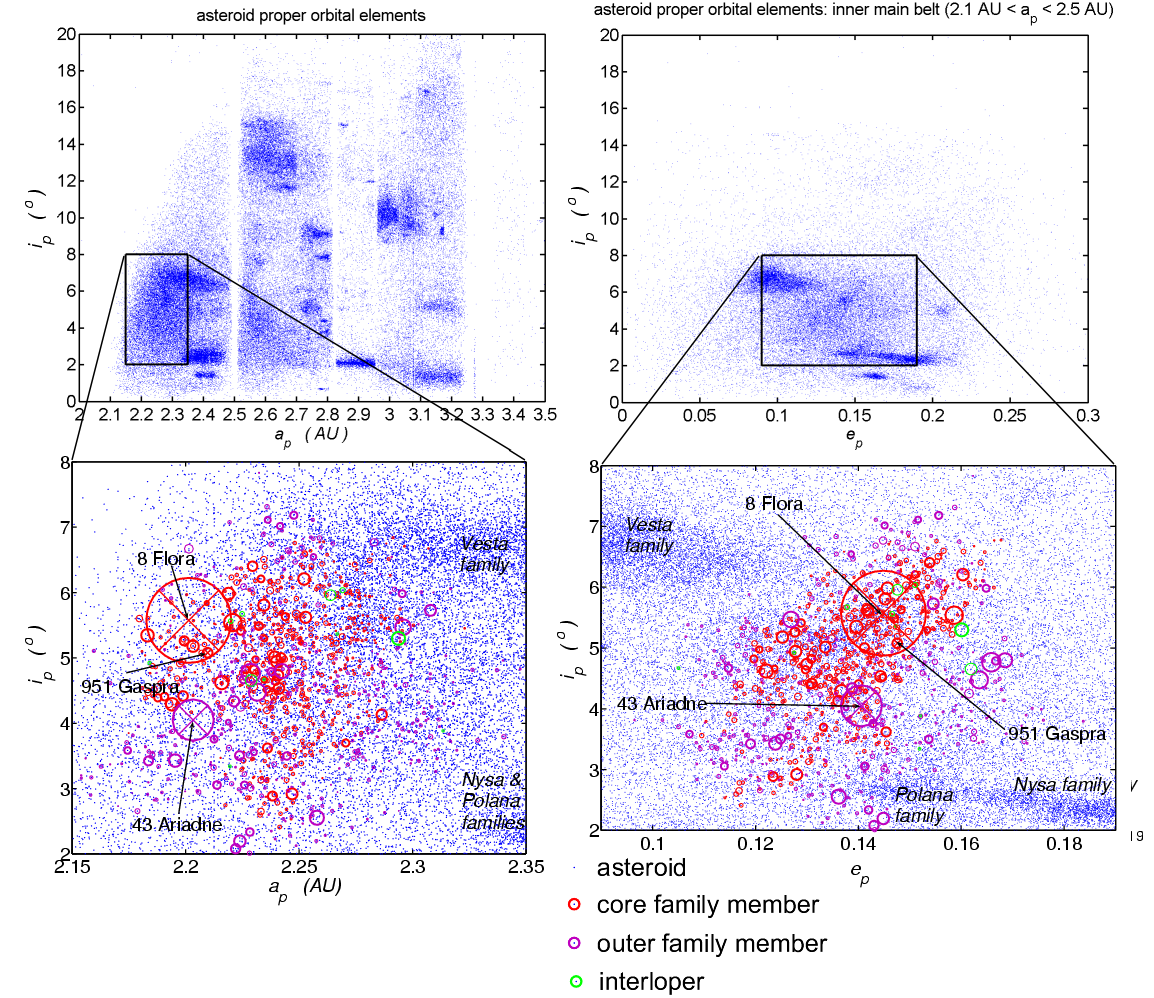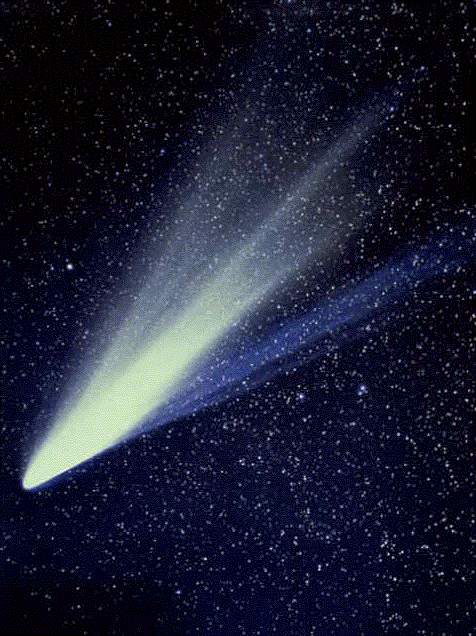If one plots the number of main-belt asteroids vs. their semi-major axis, one finds some initially puzzling patterns--gaps in the distribution where there are missing asteroids. However, these gaps are exactly at resonances with Jupiter (3:1, 5:2, 7:3). Notice that there are very few asteroids with orbits closer to Jupiter than the 2:1 resonance at 3.27 AU, or farther away from Jupiter than the 4:1 resonance at 2.06 AU. Notice the dips at 2.71 AU and at 3.07 AU. These are the 8:3 and 11:5 resonances, respectively. These are called Kirkwood gaps, and show that Jupiter's gravitational influence is dominating these special zones of the asteroid belt, slowly perturbing them over millions of years and forcing them into different orbits. Note, there are no spatial gaps in the asteroid belt itself! These gaps are only in the semi-major axes.
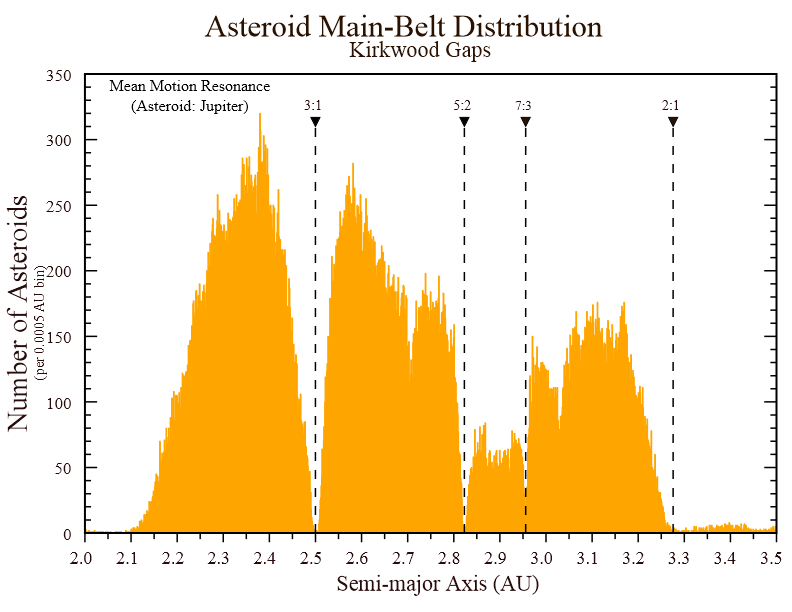
Other interesting patterns show up for plots of orbital parameters such as inclination vs. semi-major axis and inclination vs. eccentricity. Now several asteroid families begin to show up. Look carefully at the Koronis family, which is thought to be the result of a catastropic collision at least 2 billion years ago between two larger bodies. You can see evidence for perturbations having spread the semi-major axes between the 5:2 and 7:3 resonance gaps, but if they try to extend further they get wildly disrupted due to the resonance. This creates a sharp edge to the distribution. You can see similar edges in other families.
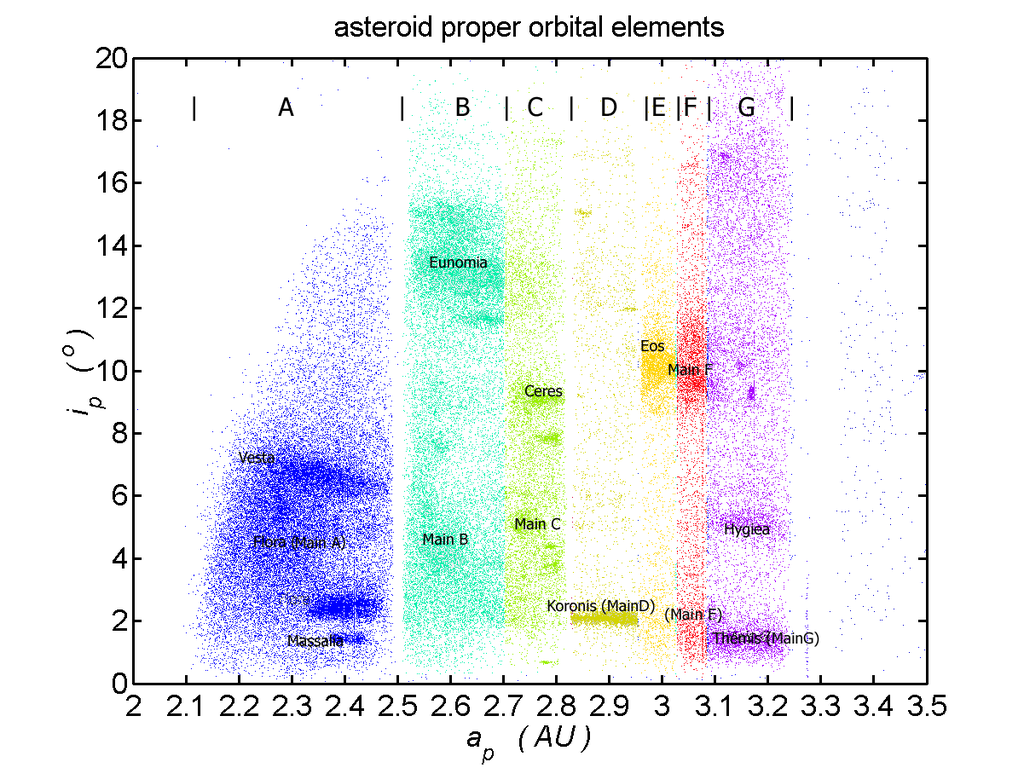
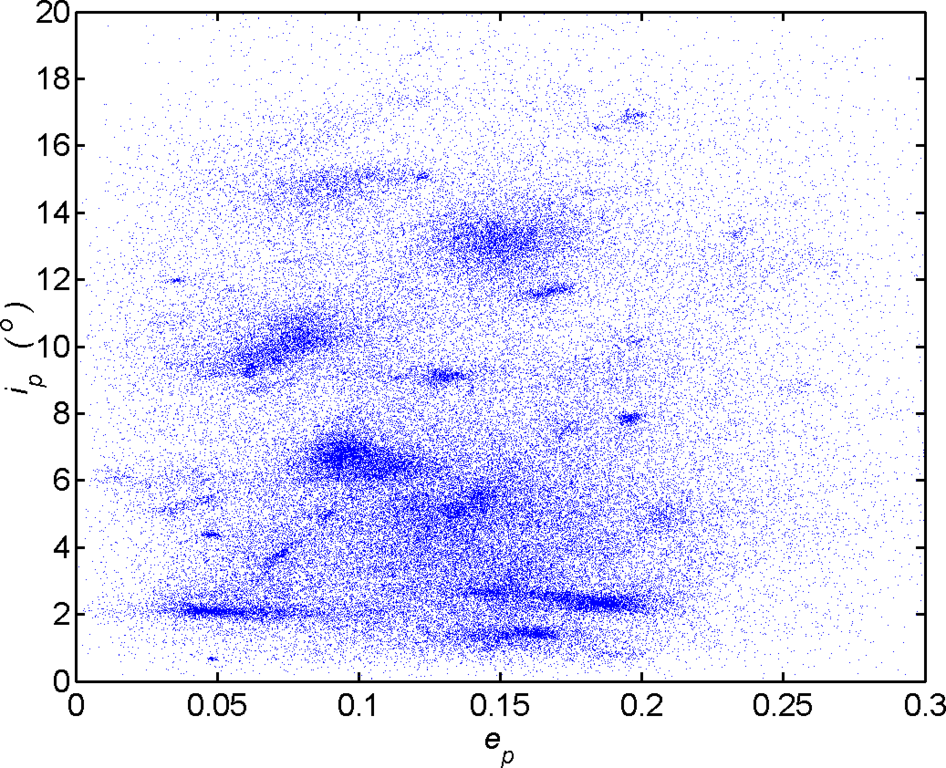
Let's take a closer look at the Flora family. This family of S-type asteroids lies close to the unstable zone of the asteroid belt due to a so-called secular resonance with Saturn. As a result, the Flora familiy is considered a good candidate for the L chondrite meteorites, which constitute 38% of all meteorites that are found on Earth. By studying these meteorites, radioisotope dating shows that the parent body was catastrophically disrupted around 470 million years ago.
